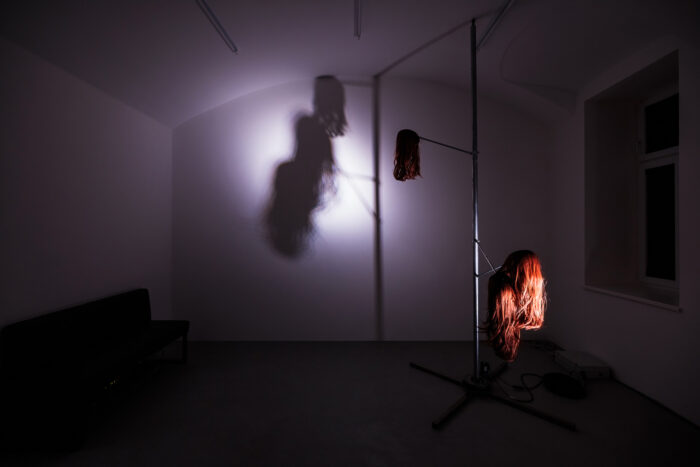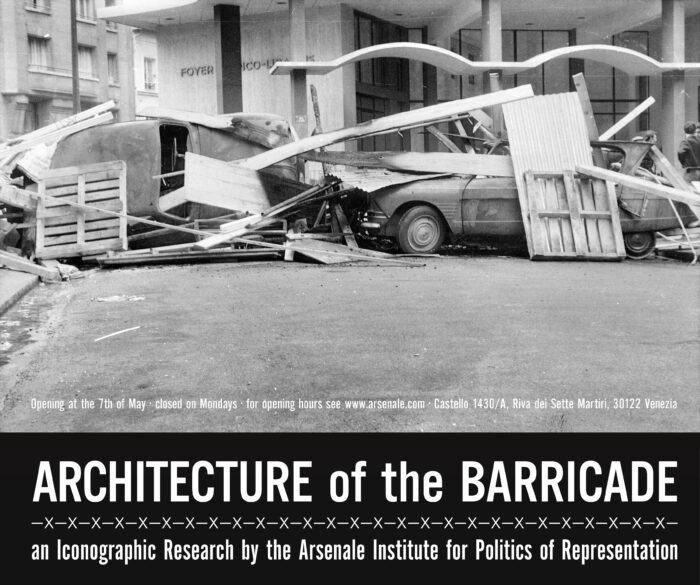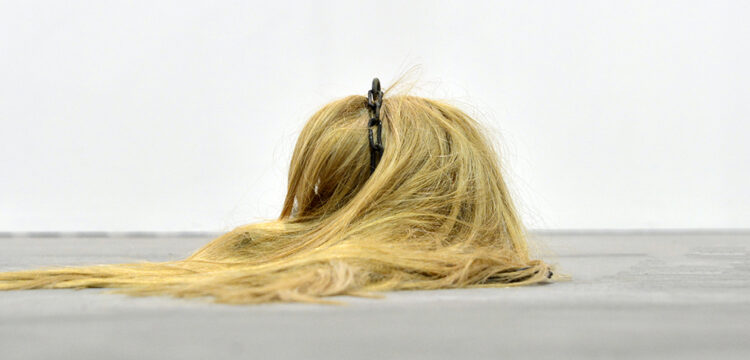Nights Out of Sync
A short story inspired by Anna Franceschini’s exhibition in Vienna
She walked Vienna’s streets as if she understood night better than day. Her coat was thin. Her hair was pinned up badly, not out of fashion but simply because she hadn’t bothered to style it properly. She did not look like someone heading to an art exhibition, but she was, or at least that was the plan she kept repeating to herself. I want to do something that is not work.
She wasn’t really sure if what she called “work” was actual work, performativity, survival, or something like the endless choreography of being looked at. Her nights blurred. Her days, even more.
When she reached the Kunstverein, she wasn’t sure if it was open. The facade carried the nostalgia of old specialty shops, the kind that once sold fine fabrics and folded pleats with care. The original signs were still there—plisse plisee plisee—faded but present. It was only the little modern sign beside the door that confirmed she had reached the right place. She stepped inside.
From day to night at the speed of day.
Crossing the threshold felt like stepping backstage into a story close to hers, but not quite. The blackout curtains seemed to swallow up every bit of residual light. The rooms of the gallery were sealed from daylight, the air thick with an intense smell of worn leather mixed with fresh paint. What had been an exhibition space now felt like a club after hours: intimate, illicit, and slightly theatrical.

She had read the press release earlier, it was Anna Franceschini’s first institutional solo in Vienna, NIGHTS OUT, curated by Attilia Fattori Franchini and Ilaria Gianni. The curators described the show in the text as “a cinema by other means,” describing kinetic sculptures that transformed commodities into quasi-living beings. But the words in the text didn’t prepare her for the feeling of actually being inside, of walking into darkness and being watched by things that shouldn’t be watching back.
Her eyes adjusted to the heavy darkness. The first room emerged in shifting shadows. Two metal poles rose from the floor, each installed with three wigs at different heights: BLONDE 1 and BLONDE 2. They looked at first like props for a performance not yet begun. Then the motors stirred, and the poles began to turn. At a first glance, it seemed to be some kind of slow, tired dance that belonged somewhere between an erotic performance and a mechanical exhaustion.
There was no soundscape other than the raw sound of machinery: the creak of rotation, the tremor of steel, and the subtle friction of hair brushing air. All these put together combed into their score: tense, uneasy, and oddly human. The lights flickered and moved as if responding to breath. Not quite rhythm, but a constant readiness, a sense that at any moment something ambiguous and sinister could occur.
The visitors stood awkwardly at first, not quite sure where to place themselves. Soon enough, the hesitation turned into part of the choreography: still bodies watching restless ones. Someone in the crowd whispered that it felt like the beginning of a noir film, the kind that opens in a nightclub where nobody is dancing anymore. She smiled, silently agreeing with what she had just heard. She didn’t comment, she just watched.

Each wig, synthetic but vividly alive, performed its little rebellion against gravity. The movement was relentless, repetitive, yet never quite predictable. Every time she thought she could anticipate the cycle, it would shift, the rotation would slow or twist in some other direction. They were performing work and desire: labour in the vests of seduction, or perhaps seduction as labour.
She leaned in closer to the artworks. The longer she stayed, the harder it became to remember that the wigs were not attached to heads, that the poles were not bodies. Something inside her tightened. And then, came a change in tempo. The poles slowed almost imperceptibly.
She followed the others into the next room.
It was quieter there, or perhaps it simply felt lonelier. A single pole stood under a single glow, holding three red-haired wigs. Here, the choreographic tone was different: slower, intimate, almost tender. If the blondes in the first room performed for a crowd, these red wigs performed for each other. This was REDHEAD: the private room, the after-show, the secret chamber of the night.
She stayed still.
The three red wigs danced in closer proximity than the blondes, sometimes brushing against each other, sometimes separating. Their choreography was intimate. Less spectacle, more conversation. The movements suggested mutual support, a sort of mechanical sisterhood: the gestures of workers who know the rhythm of one another’s fatigue. It echoed a type of labor she knew very well.

It became impossible to tell how much time had passed, ten minutes or an hour. Eventually, people began to make their way toward the exit, discussing the precision of the choreography, the sophistication of the engineering, the feminist undertones of the work. She lingered. The machines, without bodies surrounding them, sounded different. She reread a line in the press release: “A scenario we can relate to.” She almost laughed. Then she didn’t.
When she finally stepped back onto the street, she started walking without a specific direction in mind. At some point, she came upon a little night café behind MuseumsQuartier; she did not recall knowing it. Or maybe she had been there before, the facade felt familiar.
She ordered a Bloody Mary, her hands restlessly moved through her hair as she looked outside the window. She thought about the wigs, their exhaustion, their never-ending performance. She thought of the dancers she’d watched in clubs, the ones she worked with, the ones whose gestures she knew by memory. Something about the exhibition had mirrored her too closely, definitely too closely.
This thought made her uncomfortable. She turned her gaze to the inside of the café, the curtained lamps, tiny paintings scattered across the walls and old wooden chairs when finally she noticed a small old TV on the counter. A scene was playing: a metal pole rotating slowly, wigs attached at different heights, strands catching the projected light. For a moment she thought it was documentation of the exhibition, but the image looked older, grainier, like archival footage from a forgotten horror film. The choreography was almost exactly like the one she had seen at the Kunstverein.

Onscreen, the wigs kept turning. She watched the loop play again. Had she seen this film before? Had she ever stepped into Anna Franceschini’s exhibition? Confused and slightly freaked out by what she was watching, she left the cash on the table and rushed outside.
By the time the sun rose, she was unsure where the night had begun or where it had ended. Her phone buzzed. A short message. A time. A place. She walked toward the address without thinking. The neon sign above the door flickered with the same pulse as the wigs inside the Kunstverein.
Inside, the room was warm, acrid with cheap perfume and sweat. A corridor led to the dressing area. She let her hair down, adjusted a strap, checked her lipstick in the mirror. Movements as automatic as any machine’s rotation.
“You’re up,” someone called.
A choreography restarted.
Somewhere across Vienna, behind blackout curtains, the machines kept turning. And now she did too.




